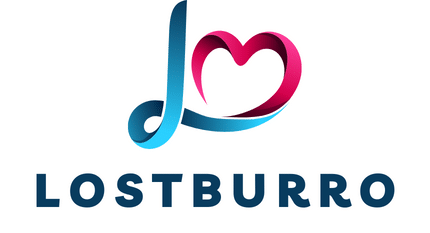How to Implement Positive Reinforcement Training for an Aggressive Parrot?

Parrots are fascinating creatures, known for their vibrant colors, incredible intelligence, and intricate mimicry abilities. However, like any animal, they can exhibit aggressive behaviours. These behaviors can be challenging to manage, especially for inexperienced bird owners. This article will delve into the practical implementation of positive reinforcement training for aggressive parrots. We will discuss the necessary steps, the importance of time management, and how to utilize the bird’s cage and perch effectively.
Understanding Parrot Behavior
Before diving into the training process, it’s crucial to understand your parrot’s behavior. Birds are complex creatures, and their actions can often indicate an underlying issue or need. Aggression in parrots may manifest through biting, loud squawking, feather plucking, or territoriality.
A lire également : How to Create a Multi-Level Play Structure for Urban Cats with Limited Space?
Aggressive behavior can arise due to various reasons such as poor socialization, frustration, fear, hormonal changes, or even a lack of mental stimulation. Identifying the root cause of your parrot’s aggression is the first step in implementing an effective training plan. It’s also essential to remember that each bird’s personality and needs are unique, and what works for one might not necessarily work for another.
Positive Reinforcement Training: An Introduction
Positive reinforcement training is a method commonly used in animal training. It’s based on the principle that rewarding a bird for good behaviors will encourage them to repeat those behaviors. In contrast, negative behaviors that aren’t rewarded will eventually fade away.
A voir aussi : What’s the Ideal Rehabilitation Program for a Dog Recovering from ACL Surgery?
For instance, if your parrot steps onto your hand without biting, you could reward them with a favourite treat. Over time, the bird will associate stepping onto your hand with receiving a treat, making them more likely to do it voluntarily.
The key to positive reinforcement is consistency. The reward must immediately follow the behavior for your parrot to make the connection. Delays in delivering rewards can lead to confusion and ineffective training.
Implementing the Training: Step by Step
Let’s take a step by step look at implementing positive reinforcement training for an aggressive parrot.
Step 1: Identify Reinforcers
The first step involves identifying a reward or ‘reinforcer’ that your parrot will respond to positively. This could be a favorite food, toy, or even praise. Keep in mind; the reinforcer needs to be something that your parrot genuinely values.
Step 2: Establish Trust
Secondly, you need to establish trust with your parrot. This may involve spending more time around their cage, speaking to them in a calm voice, and offering treats through the bars. Over time, your parrot will begin to associate your presence with positive experiences.
Step 3: Train in Short, Consistent Sessions
Parrots have short attention spans and can become easily frustrated if training sessions are too long. Try to limit training to 10-15 minutes a day and keep the sessions consistent.
Step 4: Gradually Increase Difficulty
As your parrot becomes more comfortable with each training step, gradually increase the difficulty. For instance, if you’ve been rewarding your bird for stepping onto a perch without aggression, you could begin to reward them for stepping onto your hand.
Managing Expectations and Addressing Setbacks
Positive reinforcement training requires patience and persistence. Changes in your parrot’s behavior won’t happen overnight, and there may be setbacks along the way.
If your parrot reverts to aggressive behaviour, consider whether anything in their environment has changed. Changes in surroundings, diet, or schedule can all contribute to behavioural changes in birds. It’s also important to ensure your parrot is getting plenty of mental and physical stimulation outside of training sessions.
Leveraging Expert Resources
Learning to manage an aggressive parrot can be a daunting task. Fortunately, there are numerous resources available to help you on your journey. Notable parrot behaviorist Barbara Heidenreich offers a wealth of knowledge through her books and training seminars. She emphasizes the importance of understanding parrot behaviour and incorporating positive reinforcement techniques into daily interactions.
In conclusion, while dealing with an aggressive parrot can certainly be challenging, positive reinforcement training offers a compassionate and effective approach to managing and even eliminating aggressive behaviours. With patience, consistency, and a solid understanding of your bird’s needs and behaviours, you can help guide your feathered friend towards a happier, healthier life.
Improving Progress with Negative Reinforcements
While positive reinforcement is the primary technique used to curb aggression in parrots, understanding and applying negative reinforcement can also be beneficial. Contrary to what the term may suggest, negative reinforcement doesn’t involve punishment. Instead, it’s about removing an undesirable outcome or stimulus to promote good behavior.
For instance, if your parrot exhibits an aggressive behavior like squawking loudly when you approach, you might step away, thus removing the stimulus (your presence) that is causing the reaction. Once the bird calms down, you can approach again. Over time, the parrot learns that remaining calm leads to your company, which they typically enjoy.
Also remember, understanding your parrot’s body language is crucial to recognizing and addressing aggressive behavior. Parrots often indicate discomfort or anxiety through body language before resorting to aggressive actions like biting. So, if your parrot is puffing up its feathers, moving sharply, or eye pinning (rapidly dilating and constricting pupils), these are signs that your bird is anxious or agitated. Responding to these signs promptly can prevent an escalation to aggressive behavior.
Noted bird trainers such as Susan Friedman and Steve Martin have developed extensive materials on reinforcement training and deciphering bird body language, which can be a useful resource for parrot owners.
Consulting with Professionals
If your parrot continues to show aggressive behavior despite your training efforts, it may be beneficial to consult with an avian behaviorist or a vet. Professionals like Pamela Clark, a certified parrot behavior consultant, can offer expert advice tailored to your bird’s specific needs.
Sometimes, aggression in parrots can be a sign of underlying health issues. Conditions like chronic pain, poor diet or even certain diseases can make your bird irritable and aggressive. In such cases, a visit to the vet can help identify and address any potential health problems.
Conclusion
In conclusion, managing an aggressive parrot using positive reinforcement training requires a deep understanding of your parrot’s behavior and needs. It’s imperative to remain patient and consistent, remember that all good things take time.
Ensure to observe your parrot’s body language closely, as it can provide valuable insights into their emotional state. Incorporating negative reinforcement techniques can also be beneficial.
Leverage the invaluable resources provided by experts like Barbara Heidenreich, Susan Friedman, Steve Martin, and Pamela Clark. These can greatly assist you in your parrot training journey. Don’t hesitate to consult with professionals if your bird’s aggressive behavior persists, as it could be indicative of underlying health issues.
With love, patience, and consistency, you can help your companion parrot transition from aggressive responses to more positive interactions, paving the way for a happier and healthier life for your feathered friend.
